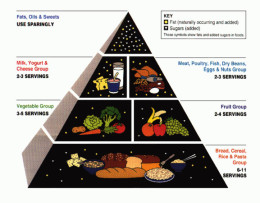 A recent study from the Center for Science in the Public Interest (CSPI) discovered most kid’s meals at restaurant chains do not meet nutritional guidelines. The CSPI study revealed that 97 percent of meals from a variety of national restaurant chains did not meet the nutrition criteria for children ages 4- to 8-years-old. CSPI, in conjunction with the National Restaurant Association, found that kids’ meals exceeded nutritional guidelines in several areas, including calories, total fat, saturated fat and sodium. These findings are leading parents to question if it is possible to purchase a healthy meal for kids from a restaurant or fast-food chain.
A recent study from the Center for Science in the Public Interest (CSPI) discovered most kid’s meals at restaurant chains do not meet nutritional guidelines. The CSPI study revealed that 97 percent of meals from a variety of national restaurant chains did not meet the nutrition criteria for children ages 4- to 8-years-old. CSPI, in conjunction with the National Restaurant Association, found that kids’ meals exceeded nutritional guidelines in several areas, including calories, total fat, saturated fat and sodium. These findings are leading parents to question if it is possible to purchase a healthy meal for kids from a restaurant or fast-food chain.Eating out is a common experience for most American families and choosing a meal that is nutritious for kids can be challenging. This study supports the link between obese children being more likely to become obese adults that has been found in previous studies. Health complications as a result of obesity can include: Diabetes, hypertension, heart disease and arthritis. The CSPI 2012 results found more restaurants and fast-food chains provided meals to meet the nutritional standard compared to previous years; however, a majority of kid’s meals are still considered unhealthy and provide few nutritious options.
CSPI and the National Restaurant Association continue to recommend that chains restructure kid’s menus to include more fruit and vegetable options, offer more whole grains and remove soft drinks and sugary beverages from kid’s menus. Until all the chains jump on board with the nutrient guidelines, Americans need to understand that making healthier choices for their kids takes work, but it is possible to choose meals with nutritional value and great taste. The CSPI’s nutrition criteria for kids’ meals include:
• Less than or equal to 430 total calories
• Less than or equal to35 percent of calories from fat
• Less than or equal to 10 percent of calories from saturated fat
• Less than or equal to 770 mg of sodium
These chains offer kid’s meals that meet CSPI and National Restaurant Association nutritional criteria:
• Subway
• Burger King
• Wendy’s
• KFC
The following is a kids’ meal from each fast-food chain that would meet the nutritional criteria for calories, total fat, saturated fat and sodium:
1. Subway—Veggie Delight (wheat bread, no cheese), apple slices, 100 percent juice
2. Burger King—Macaroni and cheese, apple “fries” (no caramel), fat-free milk
3. Wendy’s— Four-piece chicken nugget, apple slices (plain), Juicy Juice apple juice
4. KFC—Grilled chicken drumstick, corn on the cob, unsweetened tea, string cheese
Most chain restaurants, including McDonald’s, Taco Bell, Popeye’s and Hardee’s did not have a kid’s meal that met the nutritional criteria.
The 2010 Dietary Guidelines for Americans encourages all Americans to limit sodium, total fat and saturated fat to the recommended daily amounts; these guidelines also provide specific recommendations for children. While the Dietary Guidelines for Americans encourage adequate calorie consumption, choosing foods that are nutrient-dense and good sources of vitamins, minerals and fiber is best. The recommended daily amounts of sodium, total fat and saturated fat for children ages four to 18 are as follows:
• 1,500 mg of sodium (1 tsp salt = 2,300mg)
• 25 to 35 percent of total calories from fat
• Less than 10 percent of total calories from saturated fat
Children ages 4- to 8-years-old need between 1,200 and 2,000 calories each day, depending upon physical activity; with boys needing more calories compared to girls.
Focusing guidelines to make half the plate fruits and vegetables can assist in meeting these recommendations also try Super Tracker.
It is essential to develop healthy eating habits during childhood and maintain a healthy weight, in order to help prevent health complications from occurring in the future.
For more, read 97 percent of kids’ meals flunk nutrition from the Center for Science in the Public Interest.
Michigan State University Extension offers nutrition education classes for youth in schools that provide education on the benefits of choosing lower-fat meals and increasing fruit and vegetable consumption. More information can be found through Show Me Nutrition.





